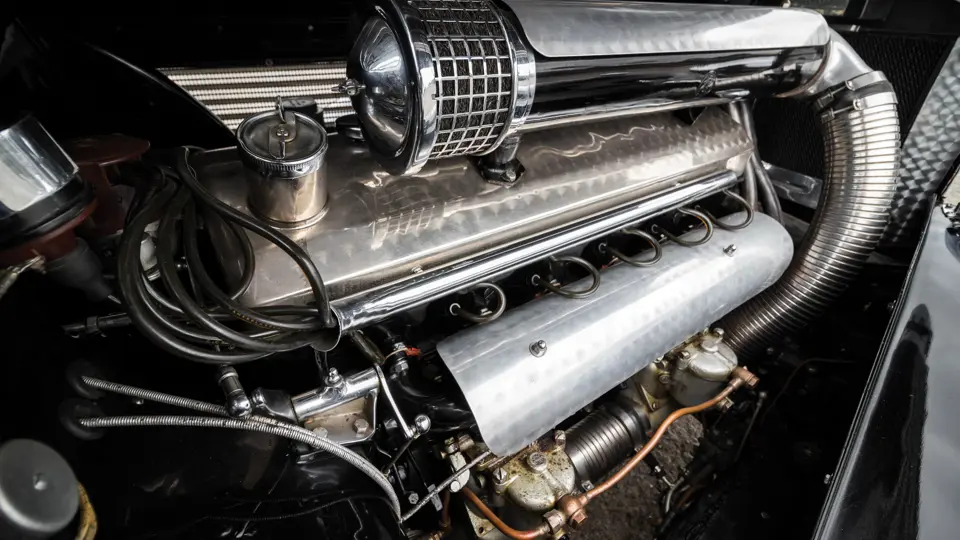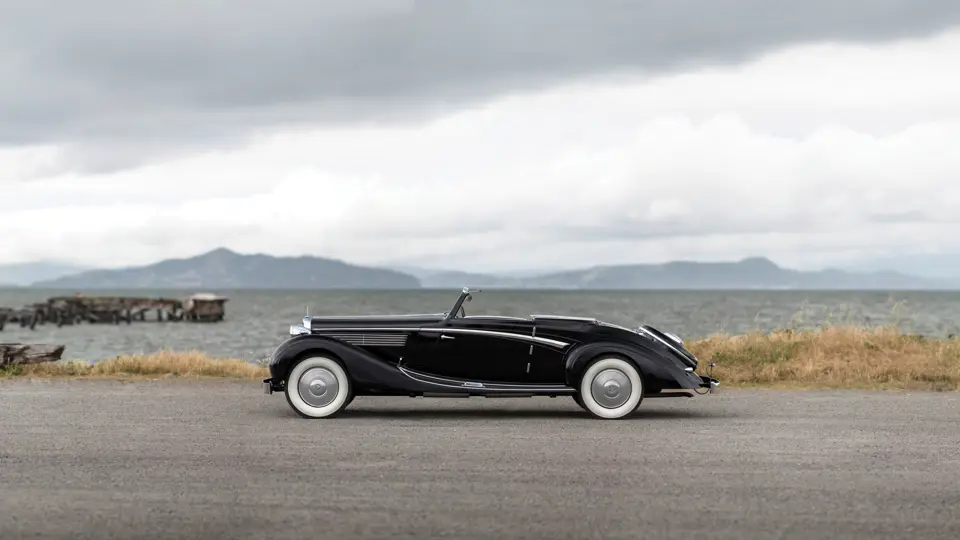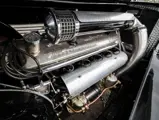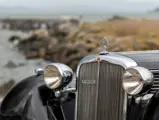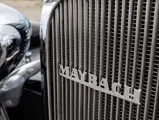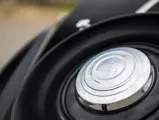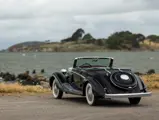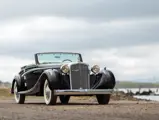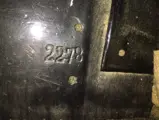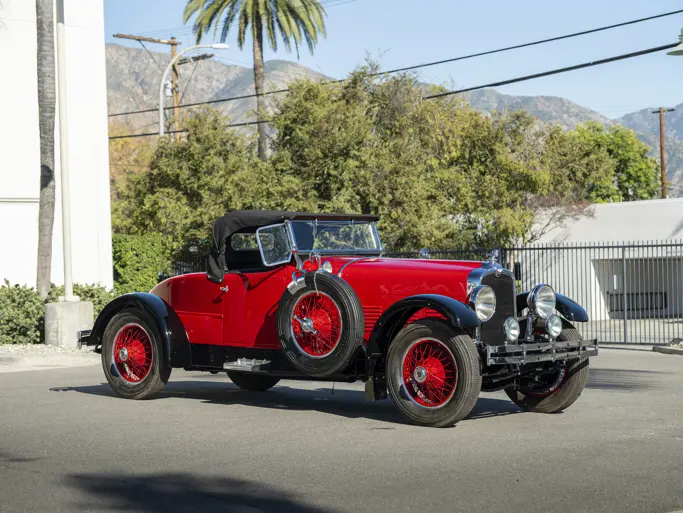
1938 Maybach SW38 Roadster by Spohn
{{lr.item.text}}
$1,072,500 USD | Sold
{{bidding.lot.reserveStatusFormatted}}
- One of the most prestigious Classic Era German automobiles
- Maybach’s short-wheelbase competitor to the Mercedes-Benz 540 K Spezial Roadster
- Largely known history; formerly owned by M.L. “Bud” Cohn and Lenora Pope Lytel
- Authentic and sporting Spohn disappearing top coachwork
140 bhp, 3,790 cc SOHC inline six-cylinder engine with two Solex MMO VS 35 carburetors, four-speed DSG manual transmission, independent front suspension with double wishbones, coil springs, and transverse leaf spring; rear swing axle with coil springs and transverse leaf springs; and four-wheel drum brakes. Wheelbase: 133 in.
THE MOST PRESTIGIOUS GERMAN CAR OF ITS ERA
It is easy to forget today, but in the 1930s, the Maybach automobile was held as more prestigious in its home country than any other car. Wilhelm Maybach had been a pioneer of the industry, helping Gottlieb Daimler develop his first car, and after inventing the honeycomb radiator, turned his attentions to aircraft manufacture. After building the powerplants for the great German Zeppelins, he turned his attention to automobiles by 1919, building incredibly expensive and exclusive automobiles with peerless engineering and build quality.
One of the most popular Maybach automobiles was the SW38, a six-cylinder model capable of achieving speeds upwards of 100 mph. An object to be admired, the SW38 sported a high quality of fit and finish in the engine bay due to Maybach’s involvement in aero engine manufacture. The interiors of the finely coachbuilt bodies which adorned these chassis featured simple, elegant wood trim, and elegantly placed switchgear and instruments in the dashboard.
Equipped with a 3,790-cubic centimeter inline six-cylinder motor, the horsepower output of 140 was impressive compared to the 120 horsepower produced by the contemporaneous 5-liter, eight-cylinder Horch 853A and the 115 horsepower produced by the 5.4-liter, eight-cylinder Mercedes-Benz without the blower engaged. The Maybach powerplant was mated to a DSG manual transmission with four speeds controlled from a preselector in the center of the steering wheel, with a floor-mounted shifter for selection of low, high, and reverse gears; this arrangement allows for a total of eight forward speeds and four in reverse. The resulting elegant combination of form and function was an automobile of wonderful quality and high style, deserving of its vast cost and regal attitude.
THE SPOHN ROADSTER
Typical of German luxury cars of this era, the Maybach had quality engineering and size, but the coachwork, the majority of which was produced by Spohn Karrosserie, was rarely truly sporting. One exception for the Ravensburg coachbuilder was its handsome roadster, built on the shorter of the two available SW38 chassis, and which was Maybach’s equivalent to the Mercedes-Benz 540 K Spezial-Roadster of the same period. A large two-passenger automobile with balanced proportions front to rear, it featured long front fenders with integrated running boards, flowing gracefully back into the rear fenders. Its lines are further lightened by a “comet-tail” chrome spear on the body sides, a rear-mounted spare, and gentle scalloping in the rear section of the body, which eased the transition downward to the fenders. Unlike most German convertibles, which featured cabriolet tops that formed a high “stack” when folded, the Spohn Roadster concealed the top below a metal clamshell-style tonneau, further smoothing the lines of the coachwork.
MRS. LYTEL’S ROADSTER
According to Michael Graff Wolff Metternich’s Maybach Register, SW38 chassis number 2055 was originally delivered to Erich Tghart, a well-known art collector and General Director of Hoechst A.G., a heavy equipment manufacturing firm in Dortmund, Germany. The Register further notes that the car was ordered as a short-chassis four-door, 4/5 passenger convertible. Given the known provenance of this car, it is likely that Tghart changed his order after it was initially recorded, or as Metternich acknowledges in the Register, it is possible that a new body was fitted when the car was a year or two old. Most importantly, a photograph on file from the early 1960s shows chassis 2055 in unrestored condition with a black body, grey fenders, and a grey top. This photograph, as well as the presence of the body number 2278 stamped on the original wooden door sills and floorboards, verifies the authenticity of this roadster.
The file accompanying the car extends back to 1951 and includes numerous invoices from repair work carried out by the private firm of renowned Maybach factory motor specialist and racer Anton Zwick. Zwick’s repairs were carried out for 2055’s next known owner, the Director of the Sohler Maschinenfabrik in Wangen, Germany. Interestingly, the invoices record the current motor, number 11164, as being in the car, which is a replacement of the original unit, and which must have been installed prior to the 1951 repairs. The invoices detail the refurbishment, which included mechanical repairs, and supporting invoices for subcontract work indicate the sourcing of some parts directly from the Maybach factory.
By 1961 the car was in the ownership of Colin “Dick” Spaight of Platterville, Wisconsin; the aforementioned photograph was taken near the Spaight farm around 1961 or 1962. Mr. Spaight’s brother, now 91, believes that the car was acquired from a United States Army officer stationed in Fort Sill, Oklahoma, and that it was that officer who imported it to the United States. The roadster was sold by Spaight in 1963 to M.L. “Bud” Cohn, the distinguished California collector still remembered for his founding of the Le Cercle Concours d’Elegance and for his stable of Mercedes-Benz vehicles.
Within a year, Mr. Cohn sold the Maybach roadster to Lenora Pope Lytel of Chula Vista, California. A granddaughter of bicycle and early automobile magnate Colonel Albert Pope, Mrs. Lytel must certainly have been an interesting person to know; she was active in antique automobile circles and had once driven a 1913 Stevens-Duryea from coast to coast. She had Cohn repaint the SW38 a dark blue with a cream or white top, and perform mechanical and cosmetic work, prior to delivery. Thereafter, as she wrote to the American Maybach registrar, she “drove it about 15,000 miles, always alone, up and down the coast.” She displayed it at the 1965 CCCA Far West Grand Classic and at the Santa Barbara Grand Classic in 1966, as well as in the AACA San Diego Region’s annual Antique Ramble in the latter year.
At age 72, Mrs. Lytel finally abandoned her days of solo road-tripping via Maybach and sold the grand automobile to 25-year-old Don Williams in 1970, complete with the blocks she had installed on the pedals to allow her feet to reach! Williams kept the car for several years before selling it to Phil Malouf of Albuquerque, New Mexico, who maintained it several years before selling it back to Williams. The car was then restored by the late Mike Fennel in its current black with oxblood red interior, and joined the stable of noted Michigan enthusiasts, Richard and Linda Kughn, who proudly displayed it in their well-known Carail museum.
In 1988, the Kughns traded it to the Imperial Palace of Las Vegas, Nevada. There it remained on display for over a decade, before the current owner acquired it in 1999, to become part of his small, select collection. Of 520 Maybach SW38 chassis built between 1936 and 1939, approximately 152 remain; the vast majority of these are Pullman limousines or four-door convertible sedans, with a literal handful being authentic cabriolets and roadsters such as the example offered here. With its history well-documented and authenticity confirmed, this SW38 stands ready to take its deserved place among the Pantheon of great German sporting cars of the Classic Era.


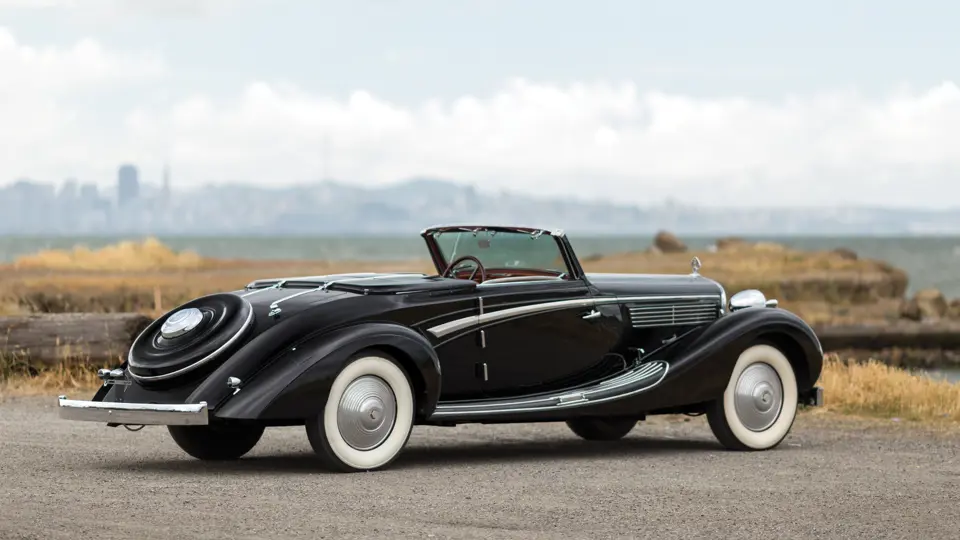



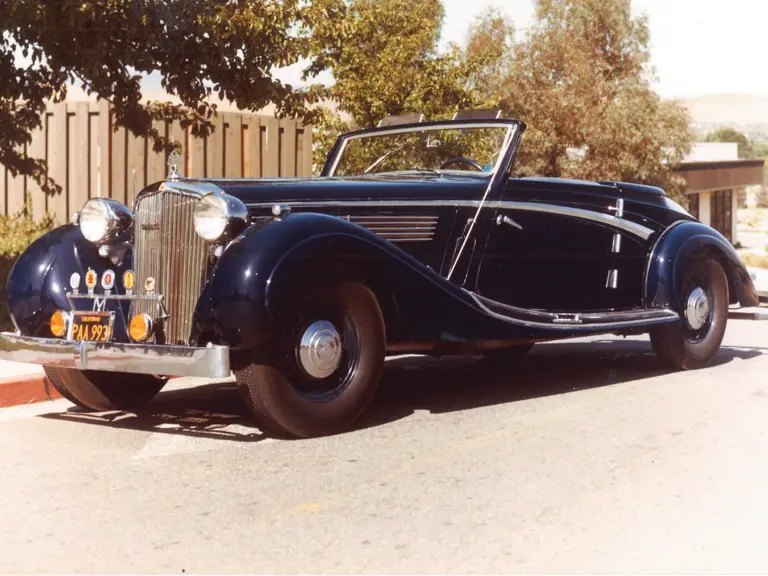
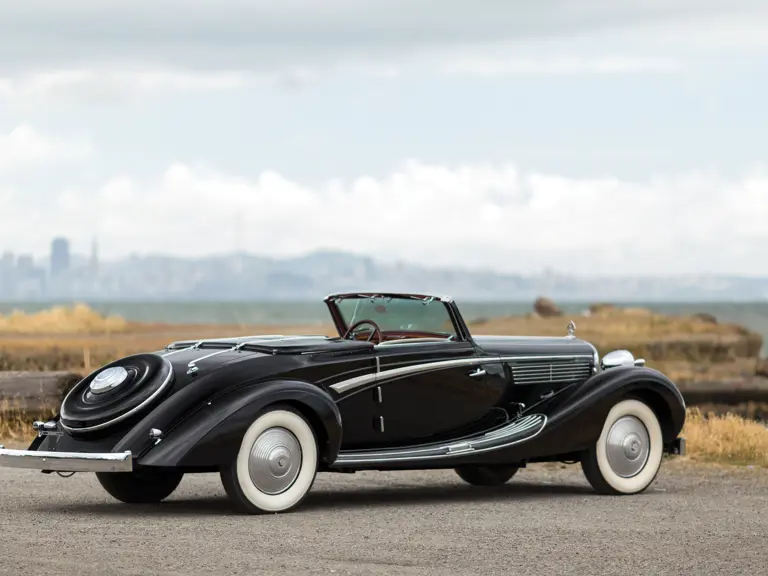
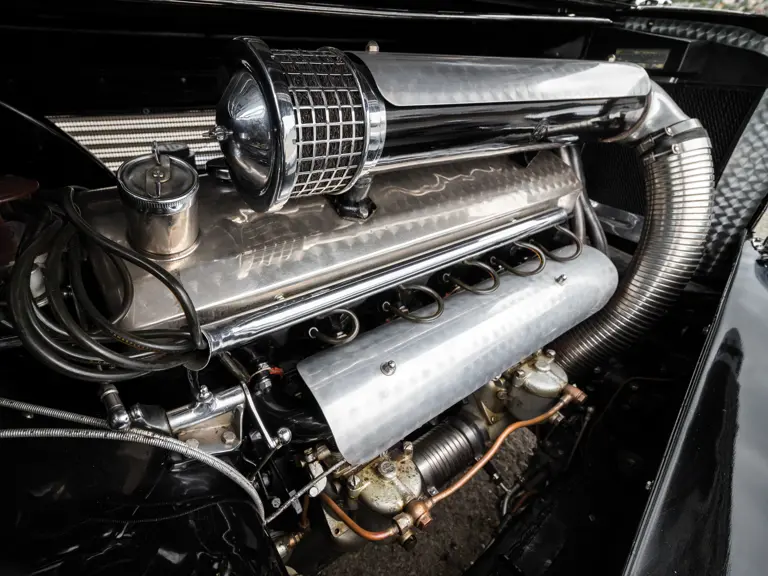
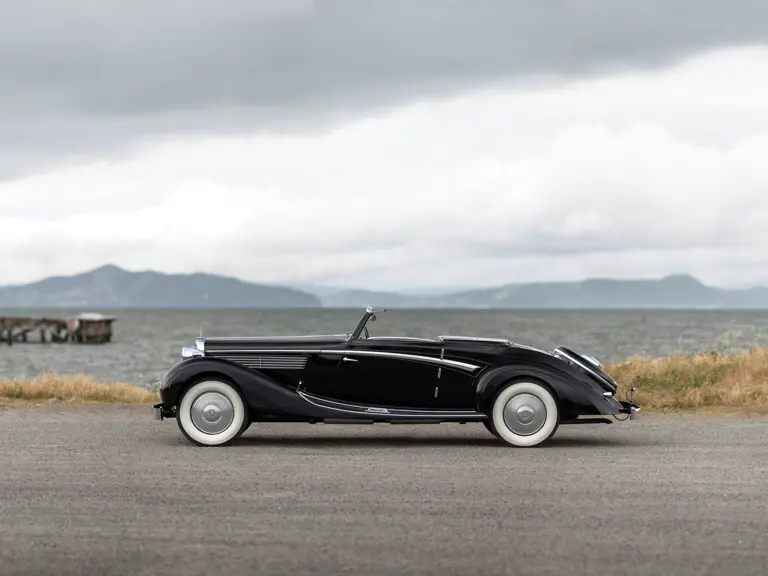
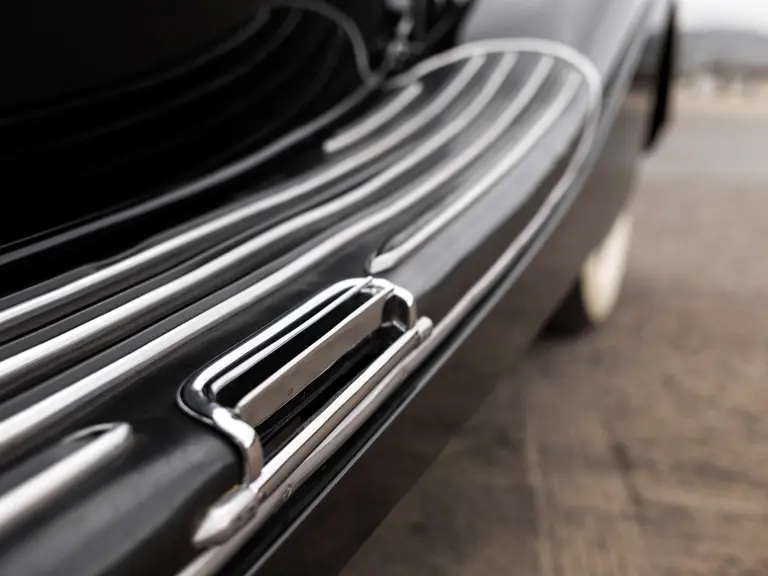
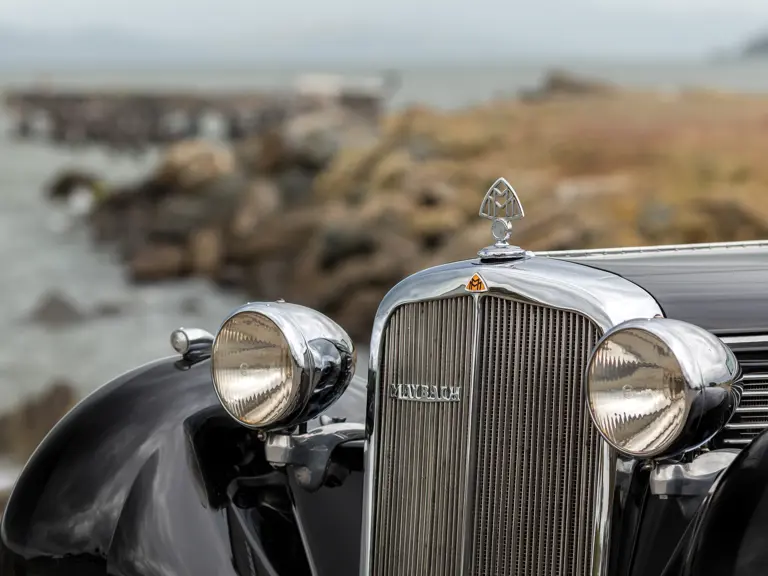
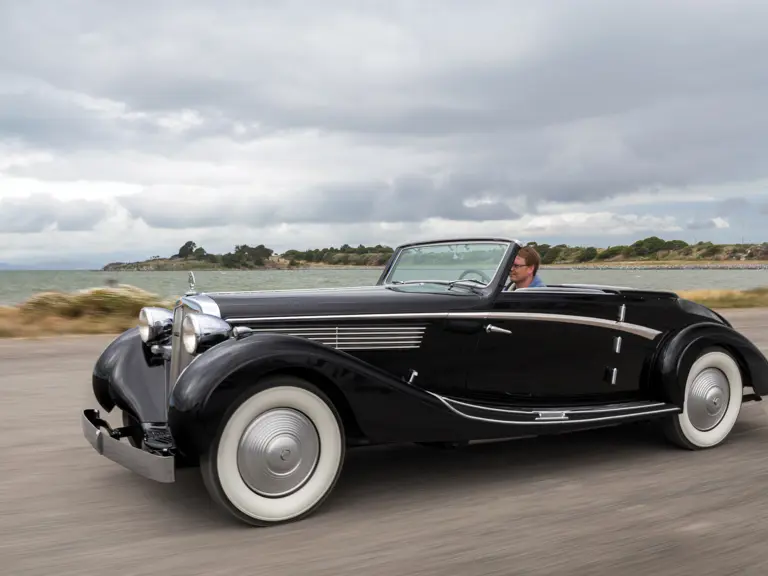
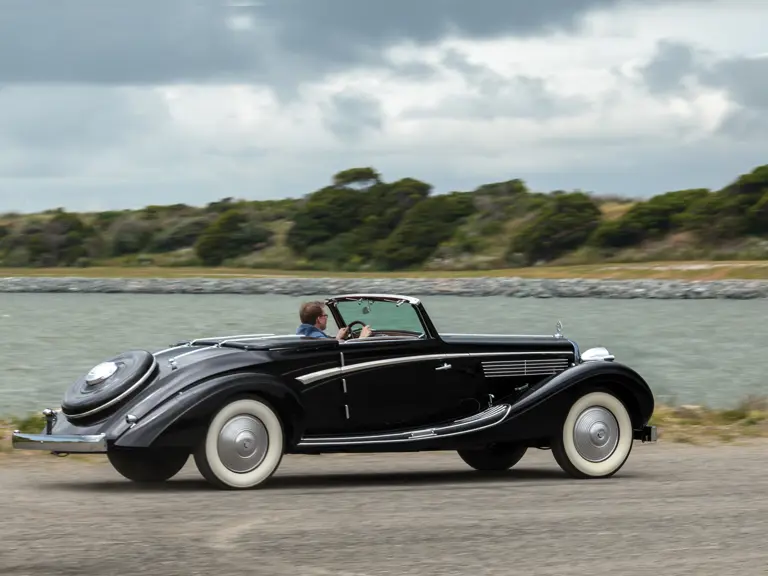

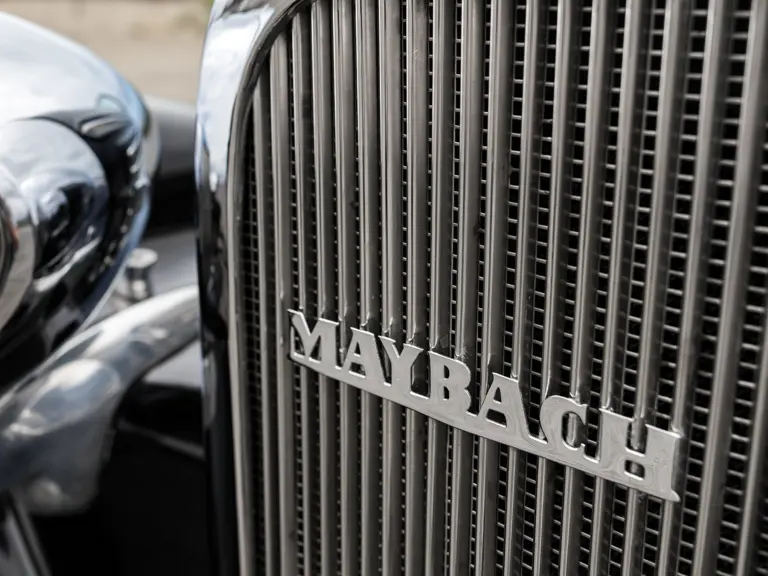
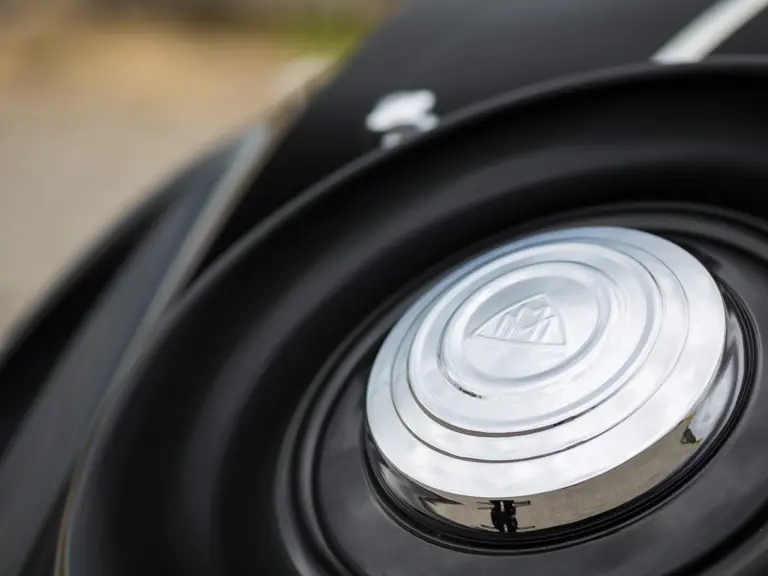
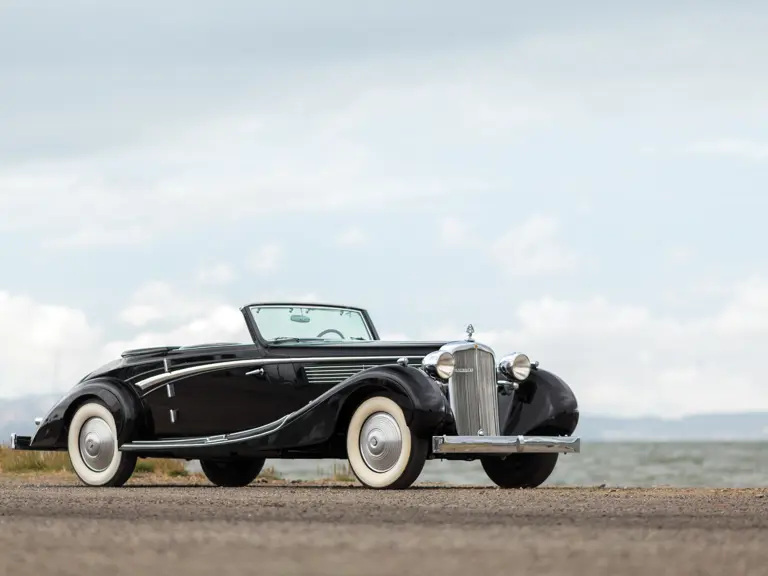
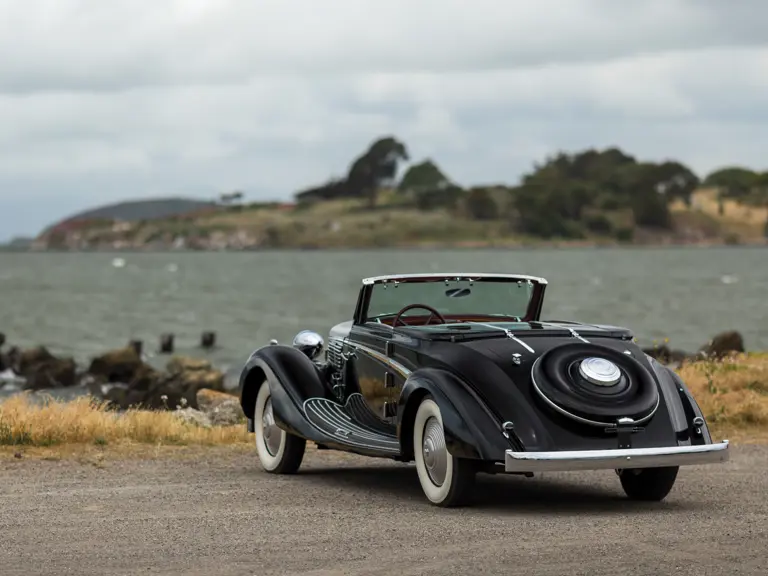
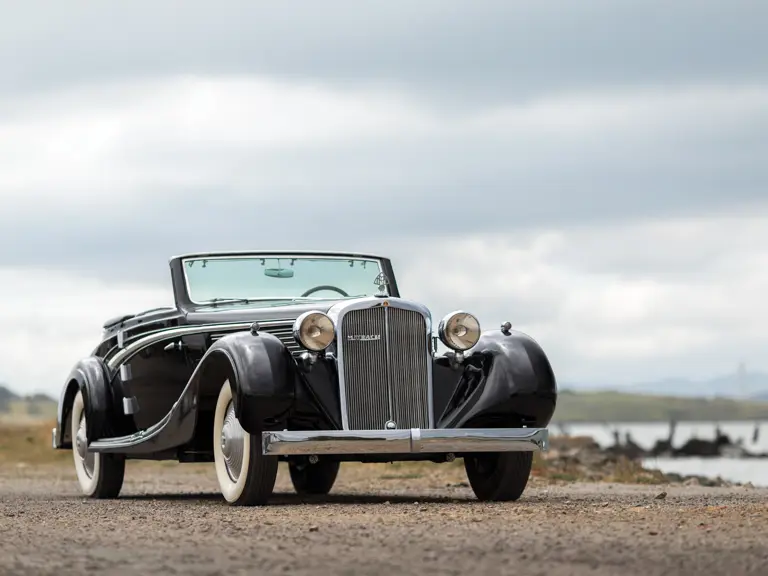
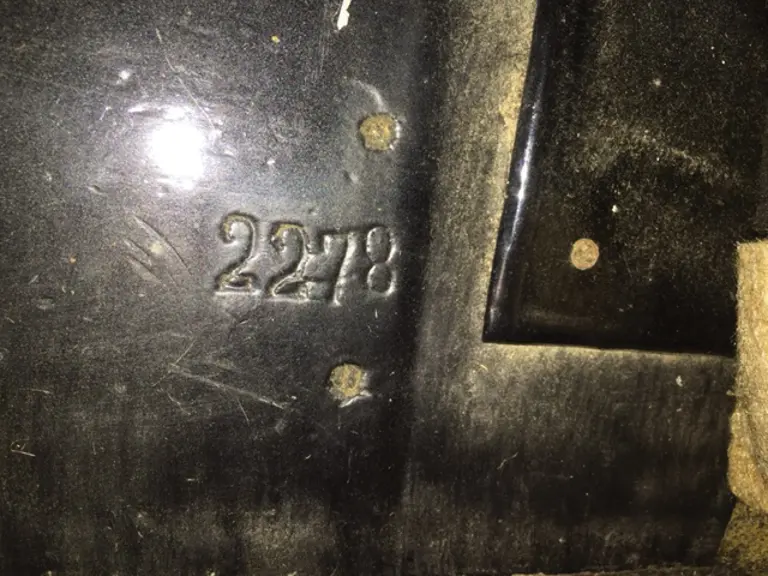
 | Monterey, California
| Monterey, California
